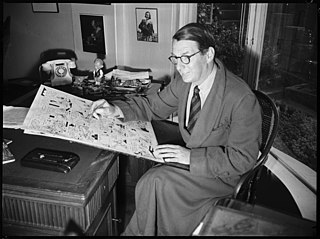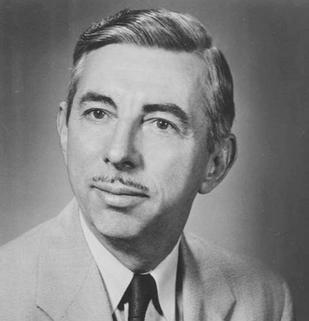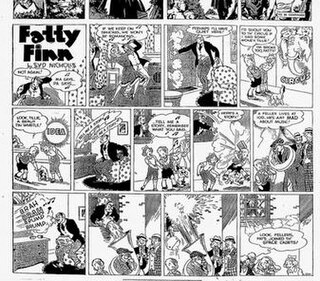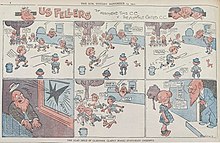
A cartoon is a type of visual art that is typically drawn, frequently animated, in an unrealistic or semi-realistic style. The specific meaning has evolved, but the modern usage usually refers to either: an image or series of images intended for satire, caricature, or humor; or a motion picture that relies on a sequence of illustrations for its animation. Someone who creates cartoons in the first sense is called a cartoonist, and in the second sense they are usually called an animator.

King Features Syndicate, Inc. is an American content distribution and animation studio, consumer product licensing and print syndication company owned by Hearst Communications that distributes about 150 comic strips, newspaper columns, editorial cartoons, puzzles, and games to nearly 5,000 newspapers worldwide. King Features Syndicate also produces intellectual properties, develops new content and franchises, like The Cuphead Show!, which it produced with Netflix, and licenses its classic characters and properties.
The comic strip switcheroo was a massive practical joke in which several comic strip writers and artists (cartoonists), without the foreknowledge of their editors, traded strips for a day on April Fools' Day 1997. The Switcheroo was masterminded by comic strip creators Rick Kirkman and Jerry Scott, creators of the Baby Blues daily newspaper comic strip.

James Charles Bancks was an Australian cartoonist best known for his comic strip Ginger Meggs.
Ron Vivian was an Australian cartoonist who is perhaps best known as having drawn Ginger Meggs after the original creator, Jimmy Bancks died in 1952.
Lloyd Piper was an Australian cartoonist and art teacher, best known as the third artist to take on the iconic Australian comic strip, Ginger Meggs, which he drew from 1973 until his death in 1983.
James Lawrence Kemsley OAM was an Australian cartoonist who was notable for producing the comic strip Ginger Meggs between 1984 and 2007.
The Australian Cartoonists' Association (ACA) is the Australian professional cartoonists' organisation and was established on 17 July 1924 as the Society of Australian Black and White Artists.
Montague Thomas Archibald Wedd was an Australian comic artist, animator and author.

Al Smith was an American cartoonist whose work included a long run on the comic strip Mutt and Jeff. Comics historian R. C. Harvey postulates that Smith's nearly 50-year run on the strip was, at the time of Smith's retirement, a world record for longevity. Smith also ran a comic strip syndication service — mainly serving weekly newspapers — from the 1950s until the late 1990s.

Australian comics have been published since 1908 and Australian comics creators have gone to produce influential work in the global comics industry,
Jason Chatfield is an Australian cartoonist and stand-up comedian, based in New York City. At 23 he became Australia's most widely syndicated cartoonist, appearing daily in over 120 newspapers in 34 countries. His art spans the disciplines of comic strip, gag cartoon, editorial cartoon, book illustration, caricature and commercial art. His work has appeared in The New Yorker, Variety, Airmail, WIRED, The Weekly Humorist, and Mad magazine. At 26 he was elected president of the Australian Cartoonists' Association, and later served as the 36th President of the National Cartoonists Society. He is the youngest person to hold both positions since the organizations began.
Kenneth Albert Emerson was an Australian cartoonist and comic strip creator. He is best known for writing the comic strips The Warrumbunglers and On The Rocks. Emerson was the son-in-law of cartoonist Eric Jolliffe.

Tristan Bancks is an Australian children's and teen's author, with a background in filmmaking and acting. As an actor, he is known for his role as Tug O'Neale on Home and Away between 1992 and 1994.
Sydney 'Syd' Wentworth Nicholls was an Australian cartoonist and commercial artist, best known for the long-running comic strip Fatty Finn.

Fatty Finn was a popular long-run Australian comic strip series, created in 1923 by Syd Nicholls. It ran in syndication until the creator's death in 1977.
James Banks may refer to:
Editors Press Service was a print syndication service of columns and comic strips that was in operation from 1933 to 2010. It was notable for being the first U.S. company to actively syndicate material internationally. Despite surviving for more than seven decades, EPS was never a large operation, characterized by comic strip historian Allan Holtz as a "hole-in-the-wall outfit."
Charlie Chaplin comics have been published in the United States, the United Kingdom, and Europe. Charlie Chaplin comic strips first appeared in 1915 in the U.S. and the U.K., cashing in on the tremendous popularity of the comedian at the time; they were some of the earliest comics inspired by the popularity of a celebrity. Although Charlie Chaplin comic strips didn't enjoy enduring popularity in the U.S., a Chaplin comic strip was published in the U.K. from 1915 until the late 1940s, while in France there were Chaplin comics published for more than 50 years.







